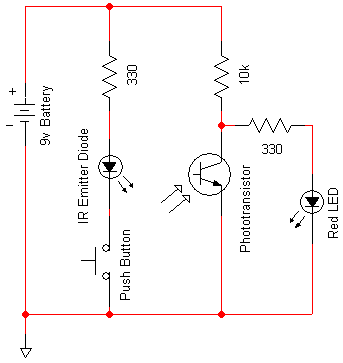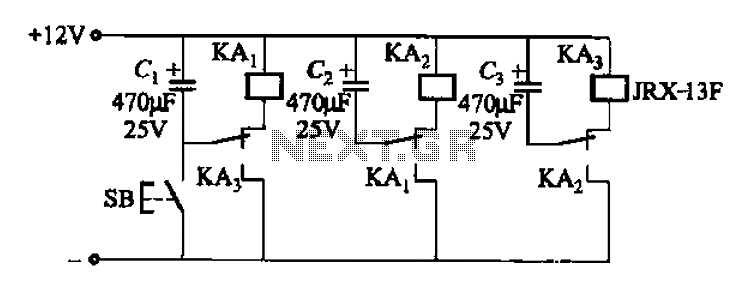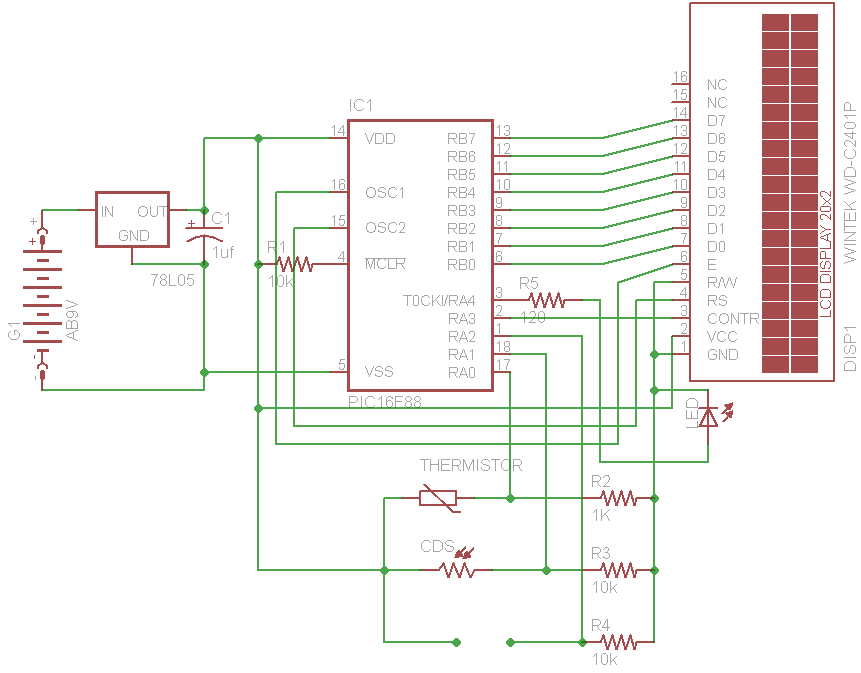
Reflected Infrared Light Switch

Infrared light reflected off a finger is used to activate this switch circuit.
This circuit utilizes infrared (IR) light to detect the presence of a finger, allowing for a touchless activation mechanism. The core component of this circuit is an infrared LED that emits light, which is directed towards a phototransistor or photodiode positioned to receive the reflected IR light. When a finger comes into proximity of the IR LED, a portion of the emitted light reflects off the finger and is captured by the phototransistor.
The phototransistor is configured in such a way that the amount of light it receives directly influences its conductivity. As the reflected light intensity increases due to the presence of a finger, the phototransistor transitions from a non-conductive state to a conductive state. This change can be used to trigger a relay or a microcontroller input, effectively turning on or off a connected load.
To ensure reliable operation, the circuit may include additional components such as resistors to limit current through the IR LED and phototransistor, as well as capacitors for noise filtering. A potentiometer can also be included to adjust the sensitivity of the phototransistor, allowing for customization based on environmental lighting conditions.
This touchless switch circuit is particularly useful in applications where hygiene is a priority or where physical contact with a switch may be impractical. It can be implemented in various devices, including automatic doors, faucets, and lighting systems, enhancing user experience while maintaining functionality.Infrared light reflected off a finger is used to activate this switch circuit 🔗 External reference
This circuit utilizes infrared (IR) light to detect the presence of a finger, allowing for a touchless activation mechanism. The core component of this circuit is an infrared LED that emits light, which is directed towards a phototransistor or photodiode positioned to receive the reflected IR light. When a finger comes into proximity of the IR LED, a portion of the emitted light reflects off the finger and is captured by the phototransistor.
The phototransistor is configured in such a way that the amount of light it receives directly influences its conductivity. As the reflected light intensity increases due to the presence of a finger, the phototransistor transitions from a non-conductive state to a conductive state. This change can be used to trigger a relay or a microcontroller input, effectively turning on or off a connected load.
To ensure reliable operation, the circuit may include additional components such as resistors to limit current through the IR LED and phototransistor, as well as capacitors for noise filtering. A potentiometer can also be included to adjust the sensitivity of the phototransistor, allowing for customization based on environmental lighting conditions.
This touchless switch circuit is particularly useful in applications where hygiene is a priority or where physical contact with a switch may be impractical. It can be implemented in various devices, including automatic doors, faucets, and lighting systems, enhancing user experience while maintaining functionality.Infrared light reflected off a finger is used to activate this switch circuit 🔗 External reference





